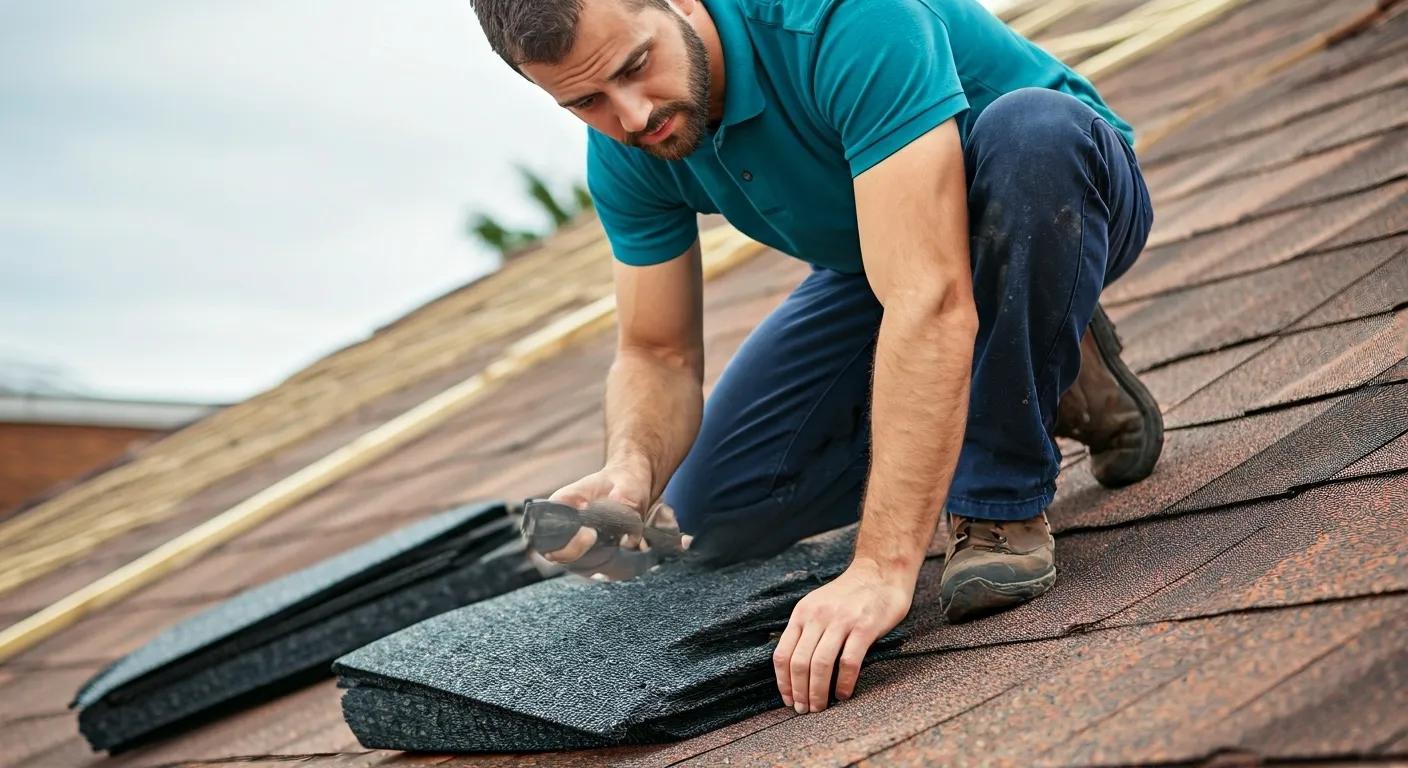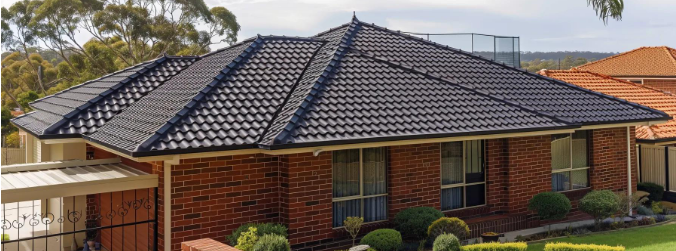Reroofing costs typically range from $12,000 to $15,000 in Adelaide, reflecting material choices, roof size, and installation complexity. Understanding these variables empowers homeowners to budget accurately, compare quotes, and secure the best value from Adelaide Roofing and Construct’s transparent pricing. In this guide, you’ll discover what reroofing involves, cost breakdowns by material, key price drivers, local suburb rates, comparisons with roof restoration, financing methods, and practical tips for precise estimates.
Roof Replacement Costs in Adelaide
The average cost to reroof a standard 150 m² house in Adelaide is $12,000–$15,000, varying by material type, roof pitch, and site accessibility.
What Is Reroofing and How Does It Affect Your Costs?
Reroofing involves stripping off existing roofing layers and installing new materials to protect your home, extend its lifespan, and improve energy efficiency. By replacing worn-out shingles or tiles, reroofing restores structural integrity, prevents leaks, and can reduce heating and cooling bills. For example, upgrading to Colorbond steel can enhance longevity by 30 years, offsetting higher upfront expenditure. This foundational process sets the stage for understanding cost breakdowns by material type, size, and complexity.
What Does the Reroofing Process Involve?

The reroofing process comprises inspection, removal, repair, underlayment installation, and finishing work, with each stage influencing labor and material costs.
- Detailed inspection to assess structural integrity and identify damage.
- Safe removal and disposal of the old roofing system, including shingles or tiles.
- Repair of decking or rafters where rot or damage is present.
- Installation of underlayment and flashing to create a weatherproof barrier.
- Fitting new roofing materials, fasteners, and ridge capping.
- Site cleanup and final quality inspection.
Each step adds to the overall price, and thorough site preparation often leads into considerations of roof size and complexity.
How Does Roof Size and Pitch Influence Reroofing Prices?
Roof size and pitch directly determine material quantities and installation difficulty, accounting for up to 60 % of total cost. A steeper pitch requires specialised safety measures and slower installation rates, increasing labor hours. For instance, a 150 m² flat roof may cost $90 /m², whereas the same area at a 35° pitch can climb to $110 /m². Accurately measuring squares (10 m² units) and slope is essential before requesting a detailed quote. Roof measurements lead naturally to evaluating labor expenses.
Why Is Labor a Major Part of Reroofing Cost?
Labor boosts overall reroofing costs by combining skilled workmanship, safety protocols, and crew coordination. Experienced roofers typically charge $50–$75 /hour, and certification in working at heights adds premium rates. Complex features like skylights, dormers, or multiple ridges can double installation time. Investing in qualified installers improves quality and warranty backing, reducing long-term maintenance outlays. As you explore material costs, keep in mind that labor often represents 50–60 % of the final invoice.
How Much Does Reroofing Cost by Material Type in Adelaide?
Material selection drives cost variations by balancing durability, appearance, and local climate resilience. In Adelaide, popular choices include metal (notably Colorbond steel), concrete and terracotta tiles, and asphalt shingles. Each option presents distinct price ranges and performance benefits.
What Is the Cost Range for Metal Reroofing Including Colorbond Steel?
Metal reroofing with Colorbond steel typically costs between $8,000 and $18,000 for a standard 150 m² roof in Adelaide. It offers corrosion resistance and cool-roof properties that reduce energy bills.
Colorbond Roofing Costs
Colorbond roofing in Adelaide typically ranges from $60 to $100 per square meter, including materials and installation.

These figures guide your decision between mid-range and premium metal systems before comparing tile options.
How Much Does Tile Reroofing Cost: Concrete, Terracotta, and Slate Options?
Tile reroofing ranges from $10,000 to $35,000, depending on type and roof area. Concrete tiles are entry-level, whereas slate commands a premium for aesthetics and longevity.

Tile weight and modular format influence labor and underlayment requirements, leading into the asphalt option.
What Are the Costs for Asphalt Shingle Reroofing?
Asphalt shingles cost approximately $7,000 to $12,000 for an average Adelaide home. They balance initial savings with a 20–25-year lifespan and straightforward installation.
- Budget-friendly choice for cost-conscious homeowners.
- Faster installation reduces labor fees and project timeline.
- Available in varied styles to match home exteriors.
Choosing asphalt shingles transitions into evaluating long-term material benefits and durability.
What Are the Benefits and Lifespan of Each Roofing Material?
Comparing cost to performance helps align budget with desired longevity and maintenance needs.

Material advantages guide homeowners toward the factors that affect total reroofing cost.
What Key Factors Affect the Total Cost of Reroofing?
Beyond material, several attributes influence the final investment: roof complexity, removal fees, structural repairs, and permits. Recognising these drivers ensures accurate budgeting.
How Do Roof Complexity and Architectural Features Impact Pricing?
Varied geometries add installation time and safety requirements. Complex elements include:
- Dormers, skylights, and chimneys requiring custom flashing.
- Steep pitches that need harness systems and slower roof walking.
- Multiple ridges and valleys increasing cutting and sealing tasks.
These architectural details can add 10–25 % to the base cost and lead into removal expenses.
What Are the Costs for Old Roof Removal and Disposal?
Removing existing materials and disposing of waste averages $30–$40 /m². Factors include:
- Asbestos handling protocols if present.
- Dumpster hire and landfill fees.
- Labor for manual tear-off and cleanup.
Accurate removal quotes prevent unexpected outlays and set the stage for underlayment considerations.
How Do Structural Repairs and Underlayment Affect Reroofing Cost?
Repairing rotten decking or replacing battens can add $1,000–$5,000, depending on roof area. Underlayment upgrades (e.g., breathable membranes) may cost $5–$10 /m². Robust underlayers improve moisture control and thermal performance, justifying additional expense before regulatory fees.
What Permits and Additional Fees Should Homeowners Expect?
Local council permits for roof replacement range from $300 to $800. Additional charges may include:
- Engineering certifications for structural work.
- Inspection fees for compliance with bushfire-resistant standards.
- Stormwater management approvals in designated sones.
These fees finalise the cost profile and point toward local pricing nuances.
How Much Does Reroofing Cost in Adelaide? Local Pricing and Contractor Insights
Adelaide’s market sees slightly lower labor rates than national averages, but material prices align closely with major cities. Familiarity with local weather and building codes reduces risk and ensures compliance.
What Are Typical Reroofing Costs by Adelaide Suburb?

These figures help narrow your search when comparing quotes from local providers.
How to Get Accurate Reroofing Quotes from Adelaide Contractors?
To secure reliable estimates, homeowners should:
- Provide detailed roof measurements and photos.
- Clarify material preferences (e.g., Colorbond, concrete tile).
- Request itemised breakdowns of labor, materials, and disposal.
- Verify licensing, insurance, and warranty terms.
- Compare at least three written quotes to identify anomalies.
Clear documentation of requirements accelerates the quotation process.
Why Choose Adelaide Roofing and Construct for Your Reroofing Project?
Adelaide Roofing and Construct offers transparent pricing, certified installers, and exclusive manufacturer warranties up to 30 years. Our proprietary project management system ensures on-time completion, while local expertise optimises material selection for South Australian conditions. Partnering with us combines value, accountability, and superior craftsmanship.
How Does Reroofing Compare to Roof Restoration in Cost and Benefits?
Reroofing replaces the entire roof covering, offering full structural renewal and maximum longevity. Roof restoration, by contrast, cleans, repairs, and recoats existing surfaces, enhancing appearance at lower cost but without major structural upgrades.
What Is the Difference Between Reroofing and Roof Restoration?
Reroofing is a full removal and replacement service, which restores waterproofing and guarantees new materials. Restoration focuses on minor repairs, pressure washing, and re-painting or sealing, typically costing 30–50 % less but delivering only a 10–15-year lifespan.
Roof Restoration vs. Re-roofing
Compared to re-roofing, roof restoration will need fewer materials and labor, making it the cheaper type of roof service.
When Is Roof Restoration a More Cost-Effective Option?
Restoration suits roofs with sound decking and minimal tile or shingle damage. It enhances curb appeal and delays major outlay, at an average cost of $5,000–$8,000. Homeowners seeking a short-term fix or aesthetic refresh often choose restoration before committing to complete reroofing.
How Can Homeowners Finance Their Reroofing Project?
Financing options can spread the financial impact of reroofing while preserving cash flow. Adelaide Roofing and Construct partners with local lenders to simplify application and approval.
What Financing Options Are Available for Reroofing in Adelaide?
- Home improvement loans with fixed interest rates over 5–10 years.
- Personal lines of credit offering flexible drawdown and repayment.
- In-house payment plans with interest-free periods up to 12 months.
- Green energy incentives for roofs incorporating solar panels or cool-roof products.
Selecting the right option aligns repayments with projected energy savings.
How to Budget Effectively for Your Reroofing Costs?
- Allocate a 10–15 % contingency for unexpected repairs.
- Schedule work in off-peak seasons for lower labor rates.
- Compare material options for lifecycle cost analysis.
- Use an interactive reroofing cost calculator to track expenses.
- Monitor project milestones to avoid scope creep.
Proactive budgeting keeps your project on track and within financial expectations.
What Are the Most Common Questions About Reroofing Costs?
Homeowners frequently ask direct cost and timing questions when planning reroofing.
How Much Does It Cost to Reroof a House in Adelaide?
The average cost to reroof a standard 150 m² house in Adelaide is $12,000–$15,000, varying by material type, roof pitch, and site accessibility.
What Factors Most Affect Reroofing Prices?
Key drivers include roof size, material choice, labor rates, roof pitch complexity, old roof removal, and structural repairs.
Is Reroofing Cheaper Than Installing a New Roof?
Yes, reroofing is effectively a new roof installation since it replaces the entire covering; roof restoration remains the lower-cost alternative.
How Long Does a Reroofing Project Typically Take?
A standard reroofing project takes 5–10 working days for a 150 m² roof, including removal, repairs, installation, and cleanup.
Each concise answer guides homeowners toward more detailed cost estimates before exploring calculators.
How to Use a Reroofing Cost Calculator for Accurate Estimates?
An interactive calculator translates roof measurements, material preferences, and local rates into tailored cost ranges, improving budget precision.
What Inputs Are Needed for a Reliable Cost Estimate?
- Exact roof area in square meters or roofing squares.
- Desired material type and grade (e.g., Colorbond, terracotta).
- Roof pitch and complexity rating.
- Suburb and council zone for permit fees.
- Inclusion of structural repairs or underlayment upgrades.
Accurate inputs produce estimates that reflect your real-world project scope.
How Does the Calculator Adjust for Adelaide-Specific Factors?
The tool applies local labor rates, supplier discounts, and council permit fees to base cost algorithms. It also factors in seasonal demand fluctuations, ensuring your estimate aligns with current Adelaide market conditions.
By combining these precise inputs and local adjustments, you can budget confidently and request spot-on quotes from contractors.
A well-scoped reroofing estimate minimises surprises and aligns expectations with actual project costs.
Investing in expert reroofing not only protects your home but also boosts property value and energy efficiency, ensuring your Adelaide residence remains safe, comfortable, and attractive for decades.

